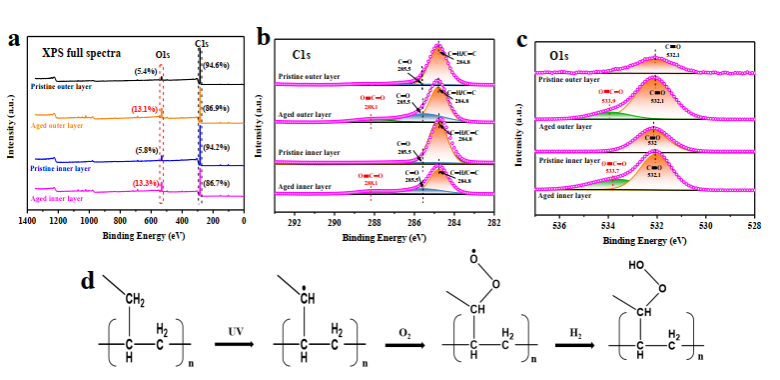Recently, the team of Professor Chongling Yan has achieved new progress on the potential role of disposable face masks (DFMs) in the environment and their ecological hazards. The related results were published online in the Chemical Engineering Journal under the title “Uncovering the disposable face masks as vectors of metal ions (Pb(II), Cd (II), Sr(II)) during the COVID-19 pandemic”. This study further revealed the potential mechanism of the role of DFMs as metal ion transfer media in the environment and laid the foundation for an in-depth study of the complex effects of DFMs on ecosystems. Besides, this study also provided a scientific and theoretical basis for revealing their ecological risks, advocating the development of public strategies and technical means to effectively reduce the potential threats of DFMs, as well as forming and improving the regulatory framework on the management of DFMs.

Fig.1. Graphical Abstract
Research Background
DFMs made of polymeric materials are the best physical means of protection against the COVID-19. They play an irreplaceable role in epidemic prevention and control, becoming cheap but important personal protective equipment. DFMs protect us but pollute the environment badly. The surge in the use of DFMs has put enormous pressure on the environment, and its potential environmental role and its ecological impact have been seriously underestimated. Due to the limited scientific data, there is still a lack of profound scientific indicators for scientific control and management of DFMs pollution. The proliferation of the use of DFMs and the lack of objectivity in the management basis pose potential threats to environmental safety, and systematic, full-cycle, multifaceted in-depth studies are urgently needed to assess their ecological risks.
Research Results
In response to the above urgent scientific questions, Professor Chongling Yan’s team focused on the pristine and UV-aged DFMs as vectors of metal ions (Pb(II), Cd(II), and Sr(II)). Further, the aging mechanism of DFMs with UV radiation as well as the interaction mechanisms between DFMs and metal ions were investigated. The main findings were as follows:
(1) The aging process would help to promote more metal ions adsorbed onto DFMs, which was mainly attributed to the presence of oxygen-containing groups (-COOH) on the aged DFMs.
(2) The adsorption affinity of pristine and aged DFMs for the metal ions followed Pb(II) > Cd(II) > Sr(II), which was positively corrected with the electronegativity of the metals.
(3) Regarding environmental factors, including salinity and solution pH played a crucial role in the adsorption processes, with greater adsorption capacities for pristine and aged DFMs at higher pH values and low salinity.
(4) The pristine DFMs interacted with the metals mainly through electrostatic interaction, while electrostatic interaction and surface complexation jointly regulated the adsorption of the metals onto aged DFMs.

Fig. 2. XPS spectra of full (a), C1s (b), O1s (c) of pristine and aged DFMs; Aging mechanism of DFMs under UV radiation (d).

Fig. 3. Influence of the NaCl on the adsorption of metal ions (Pb(II), Cd(II), and Sr(II)) onto pristine (a) and aged (b) DFMs; Schematic illustrating the competition of the active sites (c) and the compression of the electric double layer thickness of the DFMs surfaces (d) is due to the addition of a large amount of Na+.

Fig. 4. The surface electrostatic potential of the optimized geometry of PET (n = 3) (a) and the most stable structure of PP (n = 3) with –COOH group (b) obtained at the B3LYP/def2-TZVP level; The optimized complexes between the most stable structure of PP (n = 3) with –COOH group and different cations including Pb2+ (c), Cd2+ (d), and Sr2+ (e).
Research Team
Assistant Professor Hualong Hong and Professor Chongling Yan are the co-corresponding authors of the article, and Ph.D. Candidate Lujian Lin is the laeding author of the article. This work was supported by National Important Scientific Research Programme of China (2018YFC1406600) and National Natural Science Foundation of China (31870483, 31530008).
The article is shared at the following link: https://doi.org/10.1016/j.cej.2022.135613
By Chongling YAN, Hualong HONG | College of the Environment and Ecology, Xiamen University